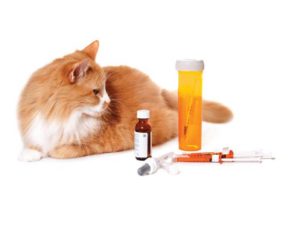
Cat care and diabetes go hand in hand to ensure that your pet cat can live an otherwise more normal life than usual. It may be unfortunate for pet cats to have their own version of diabetes, also a serious affliction among humans. It is also important for pet owners to know how feline diabetes affects cats and how they can help make life better for their pets by learning how to better care for them.
There are two types of feline diabetes that may affect your pet cats. Type 1 is caused by an insufficient production of insulin while type 2 diabetes is characterized by the inability of the cat’s body to process insulin more effectively. And just like in humans, diabetes can also strike cats at any age but is more likely to affect older cats.
There is also a secondary feline diabetes that can be caused by drugs or by some diseases that may impair the natural processing of insulin in the body.
Cats also display symptoms that may tell veterinarians or pet owners of the onset of diabetes. These symptoms also have similarities with what humans with diabetes develop as the disease progresses. Cats may show frequent thirst and urination. With the body’s inability to process or handle glucose, diabetic cats may also experience weight loss.
Other symptoms that may be associated with feline diabetes include vomiting, loss of appetite and general weakness. Diabetic cats may also have poor skin and coat condition as well as breathing abnormalities.
When a pet cat displays the symptoms mentioned above, it might be wise for pet owners to have their cats tested for sugar levels in the blood as well as in their urine. The reason why both tests might be required is that cats under stress may experience a temporary spike of their blood sugar levels. The two tests will help confirm if your pet cat really has diabetes.
Just like diabetes in humans, the feline version also has no cure yet available. Instead, feline diabetes can be controlled through a number of means. And for cats, it can be done through diet and weight control. A diet that is high in fiber and complex carbohydrates would be ideal for diabetic cats, especially the obese ones.
This type of diet is maintained not only to control the cat’s weight but also to control the cat’s blood sugar levels. There are also oral medications available that can help your diabetic pet cat maintain a suitable blood sugar level.
Pet owners of diabetic cats may also need to carefully monitor their pet’s glucose and insulin levels. For those pet owners who resort to giving their diabetic cats insulin injections for their diabetes, care to avoid overdose should always be maintained. An overdose of insulin can be a very fatal condition in cats. There are also some dietary supplements that can be used to help diabetic cats deal with their condition.
Cat care and diabetes always go hand in hand to ensure that your pet cat can lead a normal life. Providing the right care for diabetic pet cats can make sure that pet cat owners can enjoy the company of their pet for as long as possible.
The genuine concern that is shared through the care given to diabetic pet cats can show the love that pet owners may have on their dear animal companions.
